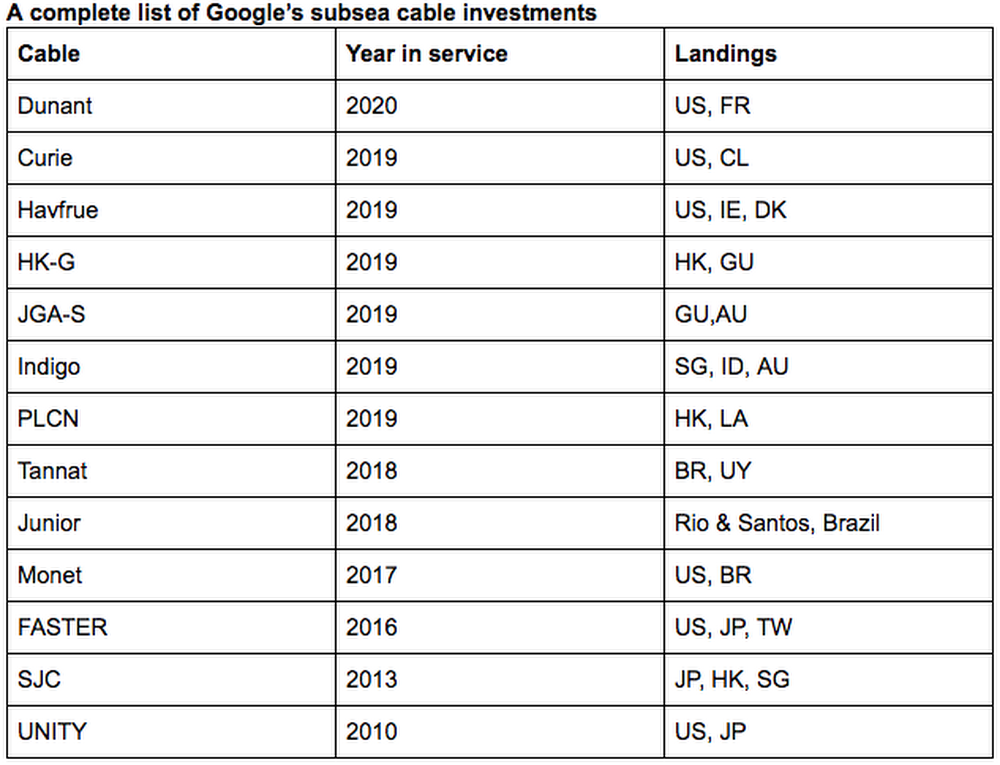Google and its partners today announced that the 5,600-miles-long INDIGO subsea cable, which connects Sydney and Perth with Jakarta and Singapore, is now ready for service. To build the cable, which will significantly strengthen the connectivity between Australia and Southeast Asia, Google partnered with AARnet, Indosat, Singtel, SubPartners and Telstra.
The cable, which features about 110 repeaters, will have a total design capacity of 36 terabits per second with the option to expand in the future. Google says that’s more than enough to handle a few million simultaneous Hangout (or Meet) video chats between Singapore and Sydney.
The cable was first announced in 2016, when it was still called APX-West and didn’t include the extension to Sydney, which is now called Indigo Central. Google joined the efforts in early 2017 and construction started in 2018.
Indigo is a good example of Google’s expanding network of submarine cables. Typically, the company builds those with partners — and even occasionally competitors — but last year, for example, it also announced that it would build its own cable between the U.S. and France, the company’s fourth private cable.
Quite a few of the cables Google invested in in recent years are scheduled to go online in 2019, so chances are we’ll hear a bit more about the company’s efforts in this area in the coming months.


Comments
Post a Comment